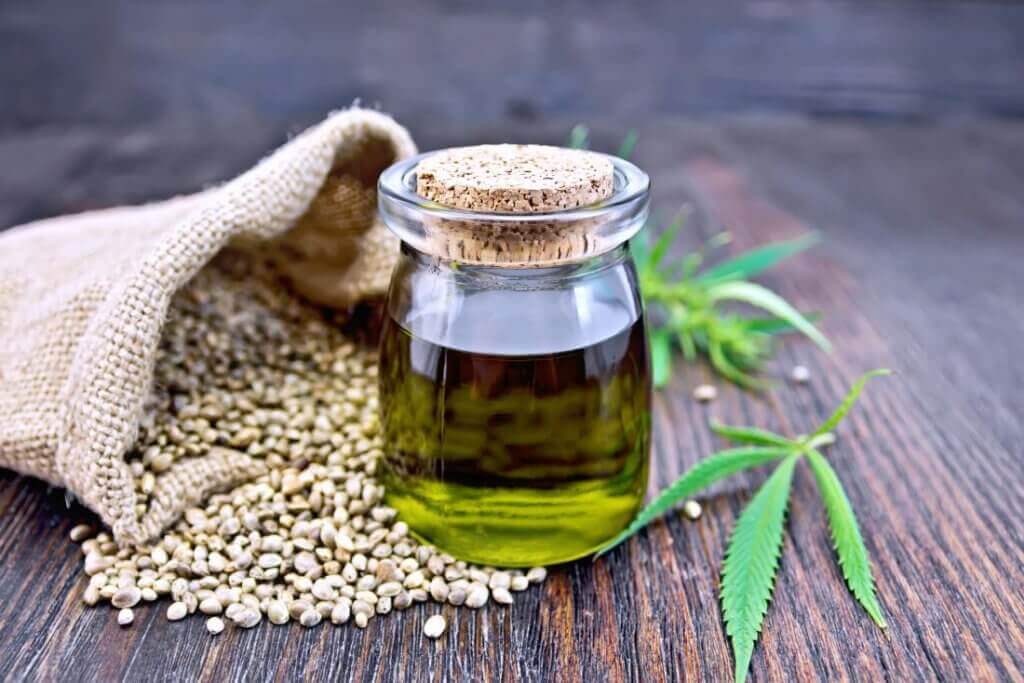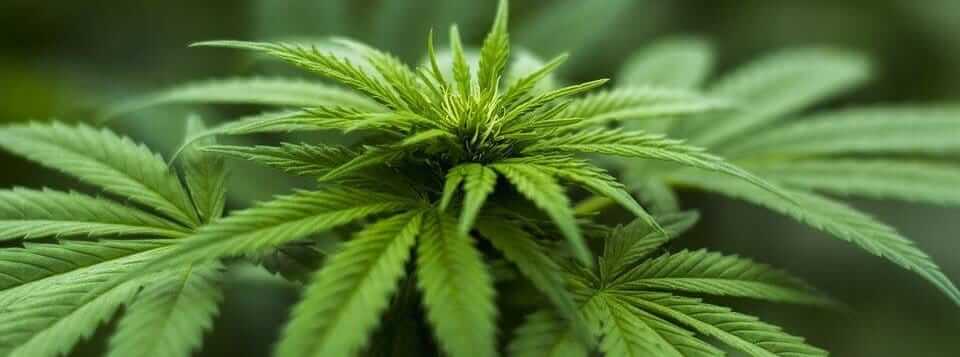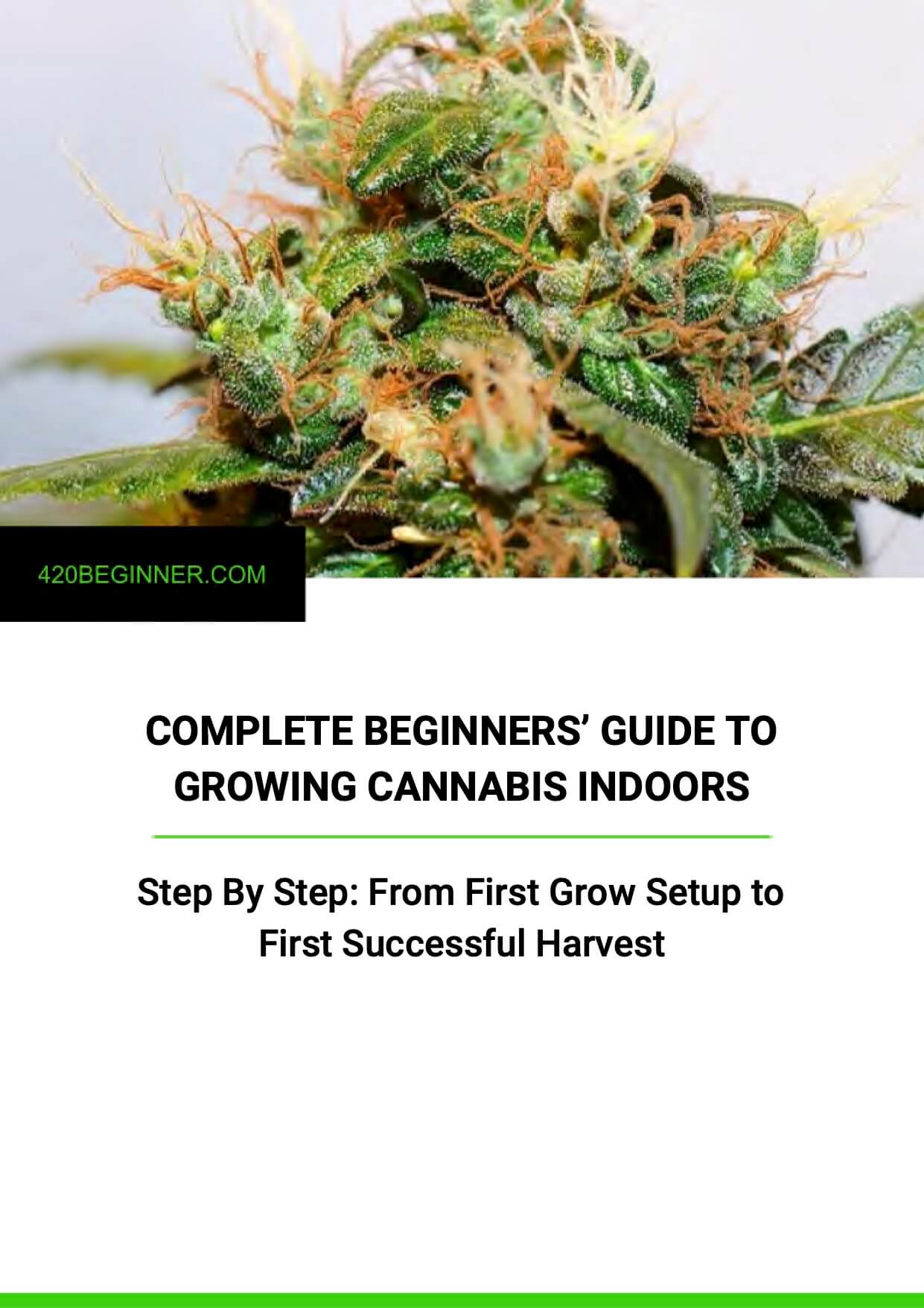If you are a fan of using natural raw materials for your skincare—like sliced cucumbers for tired eyes, used tea bags to reduce bags under your eyes, or ground coffee body scrubs—then here’s another great home remedy. Here is one reader’s recipe for cannabis skin cream.
Home Grown Cannabis.
And, yep, we’re talking about actual homegrown cannabis here rather than just hemp seed oil.
For beautiful, healthy skin it’s one of the cleanest, most natural products that genuinely works.
Which is why I decided to try my hand at a little CBDIY. Read on to see how I got on with following a simple cannabis ointment recipe—and learn how to make your own.
Why should I make my own cannabis ointment?
Naturally, on the internet, you can buy all kinds of shampoos, creams and oils which claim to contain CBD oil…
However, many (though not all) just contain hemp seed oil, not oil extracted from the whole mature cannabis plant. Check the ingredients to check what you’re getting.
Although, even when you do that, it’s still not always easy to see exactly what you’re really getting.
But if you’re a grower yourself…
Then why not experiment with making your own genuine marijuana ointments at home?
I tried it myself, and in the end I was pretty proud of the results—it’s a great way to make use of your discarded stems and leaves too.
However, I must admit that I prefer to just click a “Buy” button! It’s a lot quicker.
- FEATURE -- Natural Hemp oil Face Cream - Hemp Oil can protect against different environmental factors, and help reduce fine lines, wrinkles, edema, black circles, pouches, fine lines and sagging appearance under and around the eyes, significantly reducing the appearance of crow's feet, fine lines and thick and deep lines, making them perfect.
- ANTI AGING -- Hemp Face Cream provides the perfect anti-aging solution for dry and tired skin. Moisturizing - Natural Humidifying Hemp Cream is made from hemp seed oil and hyaluronic acid, which can keep your skin moisturizing and moisturizing all day.
- DAY&NIGHT PROTECTION -- MO TULIP HEMP CREAM formulated with Vitamin E. a natural antioxidant that acts as a natural night face cream agent by blocking free radicals and having an effect.
- INTENSE MOISTURIZING -- It is specally for Dry Skin. Locking in moisture, rejuvenating and restoring your skin, reducing the appearance of wrinkles and crease lines, leaving skin smooth, fresh and supply.
- NATURE INGREDIENTS -- We use superior source ingredients which are organic, gluten free, sustainable, fair trade, cruelty free, & nature-derived.
But back to the topic(al).
If you fancy trying to make your own cannabis ointment—and being sure exactly what’s gone into it—here’s the procedure I chose for my ointment-making experiment. It’s a bit tedious—but it was effective.
How to make your own quick and easy cannabis ointment: my cannabis ointment recipe
(Well, relatively quick anyway. Even the quickest recipes take a while.)
First, I bought neutral medical Vaseline petroleum jelly. You can also use a pure, bleached form. (Coconut butter or shea butter might be another option if you want to go totally natural. The process will be similar, but you’ll have to experiment with the timings yourself.)
Then, I chopped and ground down the leaves by hand—the smaller the pieces, the better they will release the active ingredients. You could use less tiring methods too, like a coffee grinder.
Use about 25 grams of stems and about 50 grams of dried leaf per liter of petroleum jelly (or about a liter of lightly squeezed fresh leaves).
Next, I began warming the grease in a pan (be careful here, you only want to melt it down into a liquid state, do not let it boil) and mixed in the crushed dry matter to steep. This process of steeping the herb is called “maceration”.

(Some recipes recommend decarboxylating the cannabis first. However, this is a topical not an edible. Ideally, you want it to contain some of all the cannabinoids—THC-A, for instance, breaks down into THC during decarboxylation. A certain amount of decarboxylation will take place anyway when heating it like this, ensuring a good mixture of both the “raw” cannabinoids and those that they turn into when heated.)
Warm the mixture on the hotplate for about 30 minutes, or only for as long as it takes to fully dissolve—heating too long can cause the active substances to be degraded. A half-hour is roughly how long it will take to dissolve 1 kg of Vaseline.
The larger the volume, the longer the warm-up time, of course.
Sometimes it is necessary to mix the macerating herb with a clean wooden spoon—in fact, we recommend it to ensure even distribution. Do not try to taste 🙂
One other word of warning:
During maceration my whole apartment stank like some kind of marijuana lair—I was a little afraid the neighbors might call the police! 🙂 It was so strong even my cat fled the smell.
Repeat the process for extra potency
After this first maceration, it is advisable to repeat the warm-up process 2 to 3 times more over the next few days. I repeated it once the next day and again the day after. Some people even recommend waiting a week, and then a month, for extra potency. It’s up to you.

At the end of the final maceration, I decanted the green oil from the pan, straining it twice to ensure the resulting product was free from any undissolved green parts of the plant. First, I used a thicker sieve, and then for the last sieve I borrowed one of my mom’s expensive stockings (luxury goods for luxury goods, right? 😉 ). If you’re better prepared than I am, though, cheesecloth will suffice (and work out cheaper!).
Store the final mixture in glass jars, which should be perfectly clean to prevent the ointment from deteriorating too soon. I prefer Weck Tulip Jelly Jars. I was cooking the ointment for myself, but also as a gift for my friends, so I wanted to put it in something that looked good and seals well.
Finally, I placed the glass jar with the ointment in the refrigerator (well out of reach of children!) to ensure a longer shelf life… while I chilled out too on the living room couch 🙂
What problems can cannabis ointment help with?
And what did I personally use my cannabis ointment for?
I struggled for a long time with a skin problem between my toes on one leg. I was ashamed to wear open-toed shoes. I stared enviously at the healthy feet of other women and hid my own whenever I could.
But now, after a month and a half of everyday use, I can stretch out my legs in front of me and take pleasure in seeing my own healthy toes. Every now and then, I still apply a little of my ointment, just as a preventative measure.
The problem has gone now, but I still keep my ointment at home just in case it comes in handy for any other inconveniences.
The list of problems and symptoms a cannabis ointment can help with is extensive, including:
- cracked itchy skin
- burns
- blisters
- cold sores
- soreness and inflammation
- insect bites
- acne
- bruises
- various types of pain—spinal or neck muscles, for example
- scarring
- poorly healing wounds
- psoriasis symptoms
- atopic eczema
- rashes
- menstrual pain
- rheumatoid arthritis
- inflammation of the tendons and joints.
How to spot bad cannabis ointment
Finally, a word of advice if you ever receive cannabis ointment as a gift. Here’s a reminder of what to look out for, to make sure it’s good stuff:
- If someone gives you cannabis ointment, make sure you check the color and smell before using it. A dark green color and burned odor indicate that it has been exposed to too high temperatures and its active ingredients may therefore be degraded.
- The ointment should not contain too much “dirt” (leaves), these particles unpleasantly irritate the skin and can cause itching.
- Make sure that no moldy herbs have been used to produce it (whenever possible, use freshly dried).
Summing up
Don’t hesitate to give making hemp ointment a try at home with your own homegrown. At least you’ll know exactly what you’re getting.
Because, personally, I don’t understand most of what is written on cosmetics labels, to say nothing of all the chemicals in them. Sometimes, I’d much rather trust a good old fashioned, natural home remedy 🙂
Have you tried your hand at some CBDIY? Let us know your results and recipes in the comments.
*Editor’s Note: This article, including the images, was kindly contributed by a Czech reader of the site.
Last update on 2023-02-20 / Affiliate links / Images from Amazon Product Advertising API
This product was presentation was made with AAWP plugin.






